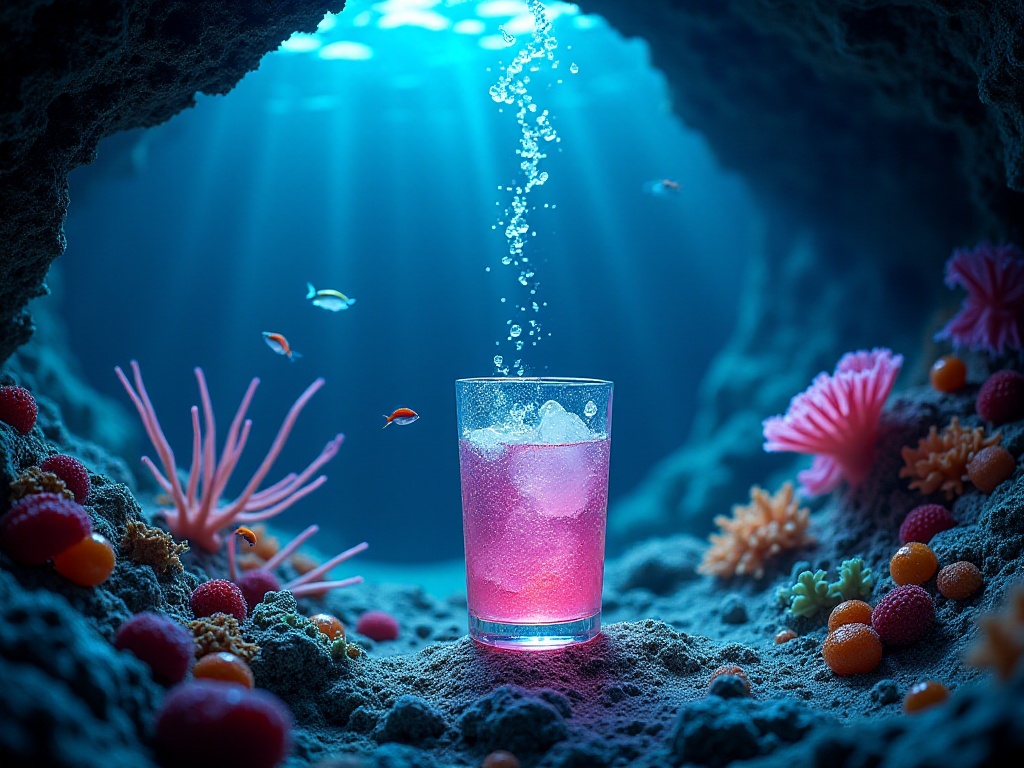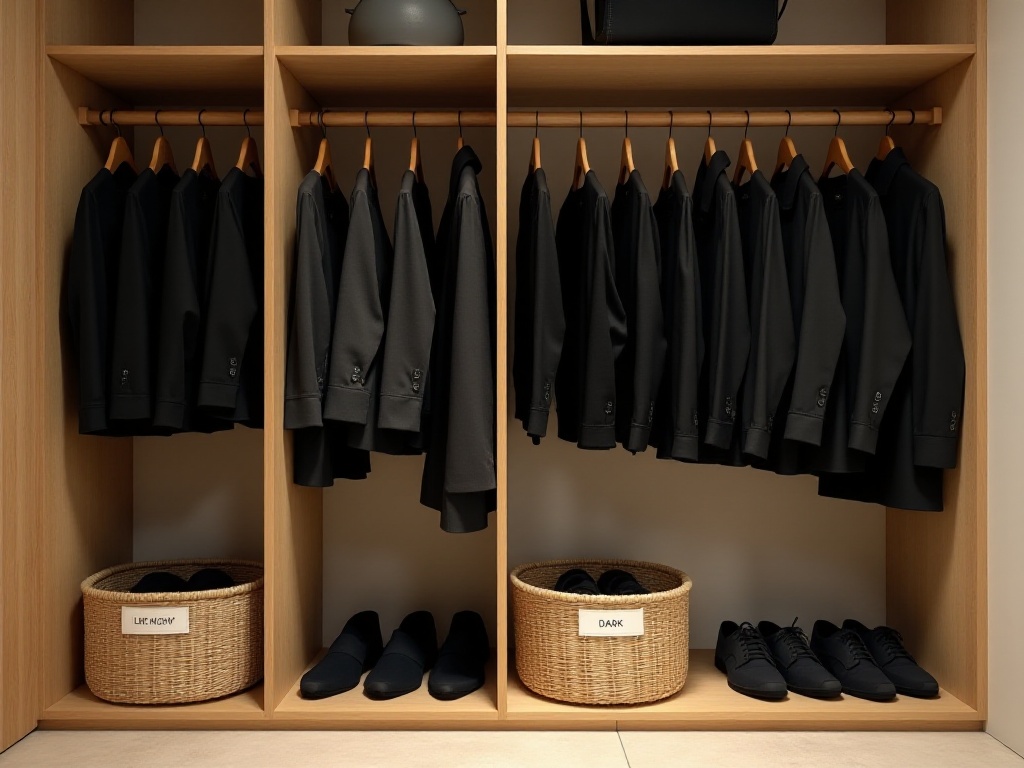Introduction
Have you ever wondered why others' drinks taste better than yours despite using the same ingredients? The key lies in those seemingly insignificant details. Today, I'll share how to elevate your beverage's taste through clever use of ice and precise temperature control.
Recently, I've been experimenting with various drink recipes at home, from basic lemonade to complex specialty teas, carefully recording each step and detail. After countless trials and errors, I've finally discovered some tricks to upgrade drink flavors. I'm excited to share these valuable experiences with everyone.
The Science of Ice
When it comes to making drinks, many people's first instinct is to simply mix ingredients in proportion and toss in some ice. But is this really the right approach? Let's first discuss ice cubes, a seemingly simple topic with hidden complexities.

The Importance of Ice Cube Size
Did you know that different sizes of ice cubes can make the same drink taste completely different? I experimented at home using identical lemon tea recipes with large ice cubes versus crushed ice, and the results were worlds apart.
The drink with large ice cubes maintained its tea fragrance and balanced sweetness until the last sip. The one with crushed ice started fine but quickly became bland. This is because large ice cubes melt slowly, while crushed ice quickly dilutes the drink.
I remember trying to make fruit tea at home once, specifically buying professional ice molds to make perfect square ice cubes. When I put these ice cubes in the fruit tea, not only did the drink look more premium, but the taste improved significantly. As the large ice cubes slowly melted, the fruit aroma and tea flavor blended perfectly, creating a layered experience with every sip.
Professional bartenders told me that in high-end bars, they even choose specific ice cubes for different drinks. Whiskey usually gets 2-3cm cubic ice cubes to let the aroma release gradually while getting chilled; cocktails prefer faceted ice that maintains low temperature while allowing the liquid to flow between ice cubes for thorough mixing.
Besides size, ice cube shape is also important. Spherical ice balls melt the slowest due to their smaller surface area, making them perfect for sipping drinks like whiskey. Long column-shaped ice is better suited for tall glass drinks, keeping the liquid cold around the straw.
Interestingly, I discovered that different ice cube shapes affect the visual appeal of drinks. For instance, diamond-shaped ice cubes create refractions under light, making the entire drink look more brilliant. This visual pleasure is also an important part of the drinking experience.

The Art of Temperature Control
Temperature control is another crucial factor often overlooked. According to beverage research data, optimal drinking temperature directly affects how taste buds perceive sweetness and acidity. For example, the same lemonade achieves ideal sweet-sour balance at 4-6°C; temperatures below 2°C actually dull the taste.
I once conducted an interesting experiment measuring drink temperatures at different stages. I found that an ordinary cold drink's temperature can change by more than 10°C from preparation to completion. This temperature change directly affects the drinking experience.
To solve this problem, I developed a "temperature curve control method." Specifically, when mixing drinks, I leave a 1-2°C temperature margin. As time passes and the drink's temperature gradually rises, this reserved temperature margin ensures the entire drinking process stays within the optimal temperature range.
Different types of drinks have their own optimal drinking temperatures. Milk tea tastes best at 6-8°C, when the milk fragrance is rich but not overwhelming. Fruit juices can be slightly colder at 4-6°C, highlighting the fruits' refreshing qualities.
In practice, I use pre-chilled glassware to slow down warming. Putting glass cups or mugs in the refrigerator beforehand effectively maintains the drink's ideal temperature. Choosing appropriate cup types is also important; double-walled glass cups, for example, effectively isolate external temperature influences.
Recipe Development
Innovative Thinking
While developing new recipes, I noticed an interesting phenomenon: the most popular drinks on the market often have a unique story or address specific needs. For example, a certain famous sports drink not only replenishes water but also adds electrolytes specifically targeting post-exercise body needs.
Innovation doesn't necessarily mean completely overturning tradition. Sometimes, small improvements to classic recipes can create surprisingly new flavors. I once tried adding mint leaves and lime zest to traditional lemonade, and this small change made an ordinary drink special.
I suggest thinking clearly about what problem your drink should solve when developing recipes. Do you want people to feel refreshed on a hot summer day? Provide energy when tired? Or create a memorable signature drink?
Keeping records during recipe development is very important. I detail every attempt's ingredient proportions, preparation methods, and taste evaluations. These records help you continuously improve recipes and avoid repeating mistakes.
When developing new recipes, I particularly focus on creating "layers" of taste. A good drink should maintain interest from first sip to last. For example, a fruit tea I recently developed delivers fresh citrus flavors at first sip, followed by rich black tea, ending with a subtle honey sweetness. This clear layering of flavors makes drinks more interesting.

Ingredient Selection
Choosing ingredients involves more factors than imagined. Take sweetness adjustment as an example: there are at least a dozen common sweeteners in the market today: cane sugar, fructose, stevia, honey, etc. Each sweetener has its characteristics.
Cane sugar is the most traditional choice, with moderate sweetness and good value, but higher calories. In practice, I found that cane sugar's solubility changes with temperature. In cold drinks, it's best to completely dissolve sugar in a small amount of hot water before adding other ingredients to avoid sugar precipitation.
Stevia is a good low-calorie choice, with 300 times the sweetness of cane sugar but a slightly bitter aftertaste. I usually mix stevia with a small amount of cane sugar, maintaining good sweetness while avoiding the bitter aftertaste of using stevia alone.
Honey not only provides sweetness but adds unique flavors. Different honey varieties bring different aromas - locust honey is light and pleasant, suitable for refreshing drinks; lychee honey is more fragrant, better for specialty flavored drinks. Note that honey tends to crystallize in cold drinks, so it's best to blend with warm water first.
Fructose has high sweetness and good solubility, especially suitable for cold drinks. However, note that fructose's sweetness comes and goes quickly, potentially affecting the drink's lasting taste. I usually combine fructose with other sweeteners to create a more lasting sweet experience.
When choosing fruit ingredients, seasonality is an important factor. Seasonal fruits are not only affordable but taste best. Summer peaches are sweet and juicy, perfect for cold drinks; winter citrus fruits add fresh sweet-sour notes to drinks.
Tea selection is also an art. Different teas have different steeping requirements; temperature and time control directly affect tea fragrance release. Green tea suits 70-80°C water temperature with 1-2 minutes steeping; black tea needs 90-95°C water temperature with 3-5 minutes steeping.
When using dairy products, pay special attention to freshness and storage conditions. I usually choose fine-textured light cream or vegetable cream to add smooth texture to drinks. But be careful with quantity - too much dairy can mask other flavors.

Business Considerations

Market Positioning
After years in the beverage industry, I've noticed a pattern: successful beverage brands always do thorough homework before launching products. According to latest market research data, China's ready-to-drink beverage market is expected to exceed 700 billion yuan in 2024, with new-style tea drinks accounting for over 30%.
Behind this huge market lie countless opportunities but also fierce competition. Brand positioning is crucial to establishing a foothold. I suggest starting from actual consumer needs, deeply understanding target group consumption habits and preferences.
Young consumers increasingly value health attributes in beverages. Low sugar, low calorie, and no additives have become new consumption trends. They also care about products' "social attributes" - drinks that photograph well and are shareable are more likely to gain favor.
Personalization is also worth attention. More consumers want to adjust drink sweetness, ice amount, etc., according to their preferences. While this personalization increases operational complexity, it significantly improves customer satisfaction.
Innovation is key to maintaining market competitiveness. Regularly launching new products, participating in holiday marketing, hosting special events are effective ways to attract consumers. But innovation must be based on deep market understanding - blindly following trends may backfire.
Quality Control
Remember, in the beverage industry, quality is the lifeline. This means not just good recipes, but includes ingredient stability, production process standardization, storage and transportation requirements, and many other aspects.
Ingredient procurement is quality control's first checkpoint. I suggest establishing a comprehensive supplier evaluation system with regular ingredient quality testing. Also, establish ingredient traceability mechanisms ensuring every batch can be traced to its source.
Production process standardization is also important. Every operation step needs clear standards, from water temperature control to steeping time, all specified to exact values. This ensures consistent quality in every drink.
Storage and transportation are equally important. Different ingredients have different storage requirements - temperature, humidity, light exposure, and other environmental factors must be strictly controlled. Especially for perishable ingredients, storage conditions and shelf life management need extra attention.
Staff training is crucial for quality assurance. Every employee must master standard operating procedures and understand various ingredients' characteristics and usage methods. Regular skill training and assessment help teams maintain high professional standards.
Equipment maintenance and cleaning are also important parts of quality management. Ice machines, coffee machines, juice makers, and other equipment need regular cleaning and maintenance to ensure optimal working condition.
Conclusion
Making a delicious drink seems simple but is actually complex. From ice selection to recipe development, from ingredient control to business operations, every aspect deserves serious attention.
On the path to perfect drinks, we need continuous learning and innovation. Every failure is valuable experience, every feedback is direction for improvement. Let's continue exploring this path to ultimate taste together, creating more surprisingly delicious drinks.
Through continuous practice and summary, I believe everyone can master the secrets to making perfect drinks. I look forward to seeing more people enjoy self-made delicious drinks, and seeing more excellent innovators emerge in this vibrant industry.
Have you tried making drinks yourself? What interesting discoveries have you made in the process? Welcome to share your experiences in the comments. Perhaps your experience will inspire others.
Remember, every detail is a necessary path to perfect drinks. Let's continue exploring this journey to ultimate taste together.
Related articles




